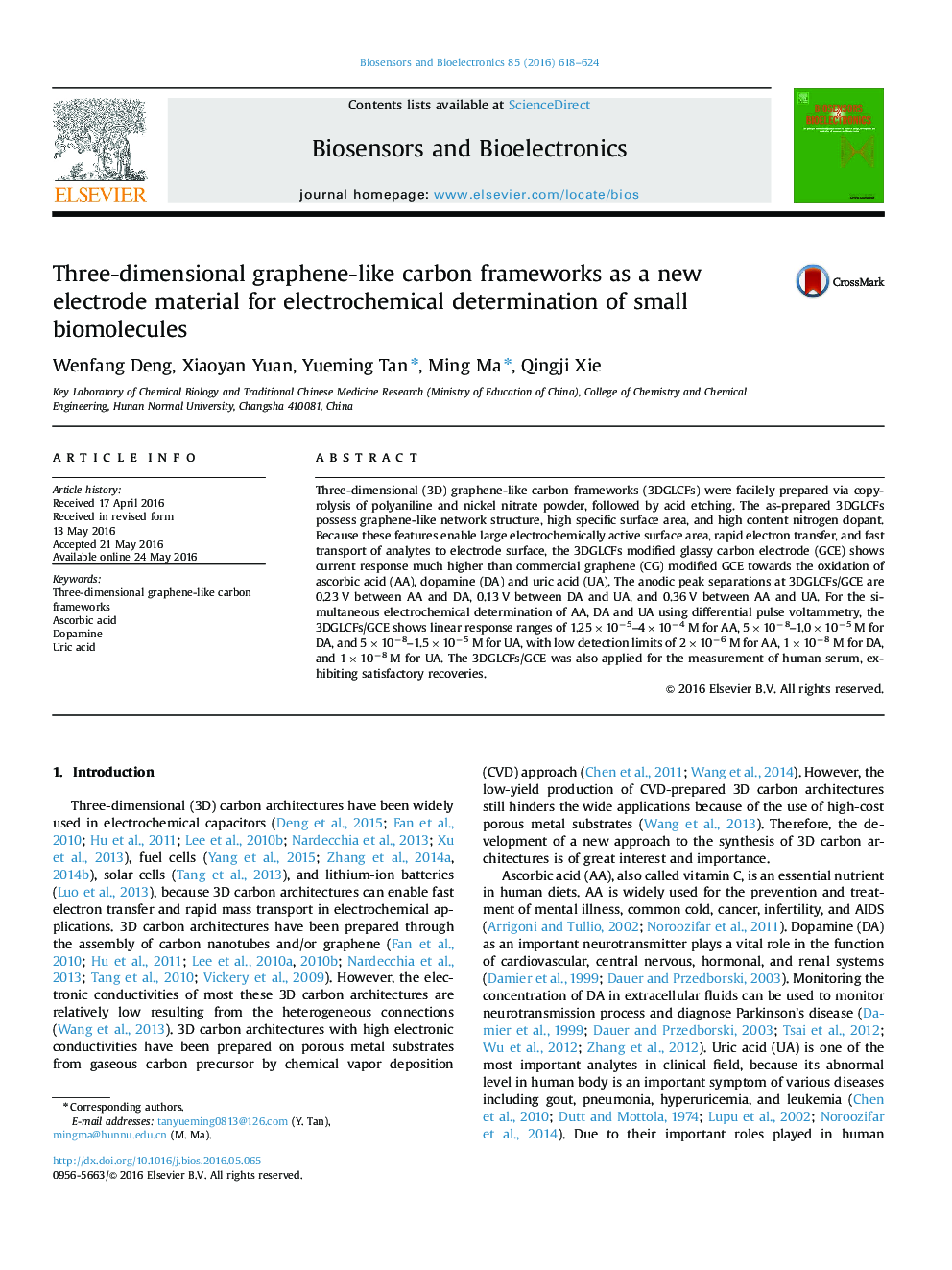| Article ID | Journal | Published Year | Pages | File Type |
|---|---|---|---|---|
| 7230455 | Biosensors and Bioelectronics | 2016 | 7 Pages |
Abstract
Three-dimensional (3D) graphene-like carbon frameworks (3DGLCFs) were facilely prepared via copyrolysis of polyaniline and nickel nitrate powder, followed by acid etching. The as-prepared 3DGLCFs possess graphene-like network structure, high specific surface area, and high content nitrogen dopant. Because these features enable large electrochemically active surface area, rapid electron transfer, and fast transport of analytes to electrode surface, the 3DGLCFs modified glassy carbon electrode (GCE) shows current response much higher than commercial graphene (CG) modified GCE towards the oxidation of ascorbic acid (AA), dopamine (DA) and uric acid (UA). The anodic peak separations at 3DGLCFs/GCE are 0.23Â V between AA and DA, 0.13Â V between DA and UA, and 0.36Â V between AA and UA. For the simultaneous electrochemical determination of AA, DA and UA using differential pulse voltammetry, the 3DGLCFs/GCE shows linear response ranges of 1.25Ã10â5-4Ã10â4Â M for AA, 5Ã10â8-1.0Ã10â5Â M for DA, and 5Ã10â8-1.5Ã10â5Â M for UA, with low detection limits of 2Ã10â6Â M for AA, 1Ã10â8Â M for DA, and 1Ã10â8Â M for UA. The 3DGLCFs/GCE was also applied for the measurement of human serum, exhibiting satisfactory recoveries.
Keywords
Related Topics
Physical Sciences and Engineering
Chemistry
Analytical Chemistry
Authors
Wenfang Deng, Xiaoyan Yuan, Yueming Tan, Ming Ma, Qingji Xie,
